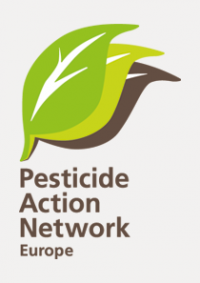No contamination before 1988 - sharp increase since 2010 - current levels very high
Brussels, 23 April 2025 – New data revealing a dramatic rise in levels of the forever chemical TFA (trifluoroacetic acid) in the environment have been published today by the Pesticide Action Network (PAN Europe) in its report Message from the Bottle – The Rapid Rise of TFA Contamination Across the EU.
We analysed 10 old and 39 recent wines from 10 European countries. TFA was detected in all recent wines, with a median concentration of 110 micrograms per litre (µg/l) and peak levels of up to 320 µg/l. This is around 100 times higher than the average - already high - levels previously measured in surface and drinking water. In stark contrast, TFA was not detected in old wines harvested before 1988. A sharp increase in contamination levels has been observed since 2010.
Parallel pesticide analyses showed residues of up to 8 pesticides and pesticide metabolites in 94 % of the conventionally produced wines. A total of 18 pesticides were detectable in all bottles, including two PFAS fungicides, fluopyram and fluopicolide. Notably, four out of five organic wines analysed were free from any detectable pesticide residues - but all of them contained TFA. Nevertheless, wines in the upper half of the TFA concentration range (mean: 176 µg/l) showed, on average, twice the pesticide load compared to those in the lower half (mean: 58µg/l).
Helmut Burtscher-Schaden, Environmental chemist at GLOBAL 2000 and initiator of the study, describes the findings as “alarming in two respects.” The first is the high concentration levels detected, which point to massive bioaccumulation of TFA in plants: "We are likely ingesting significantly more TFA through our diet than previously assumed." Even more concerning, he says, is the sharp increase in contamination since 2010. “Urgent action is needed to stop further TFA emissions into the environment.”
Michael Müller, Professor of Pharmaceutical and Medicinal Chemistry at the University of Freiburg, describes the steep accumulation of TFA in plant-based foods as “a red flag that calls for decisive action." Independent of today’s PAN study, he has observed similar trends in his own analyses of TFA in both aged and recent wines. “Our findings clearly show the urgent need for immediate measures to stop further TFA emissions,” he said. “In more recent wines harvested after 2020, we have observed a wide range of TFA contamination, from 20 to over 300 µg/l. The lowest levels were found in organically produced wines, from grapes grown on land that has been free from chemical inputs for decades. This points to PFAS pesticides as a direct or indirect contributing factor that may help explain the high TFA levels detected in crops.”
Confirmation of the steep increase in TFA levels comes also from a comparison with official EU data collected by the EU Reference Laboratory CVUA Stuttgart. The 2017 study, carried out on behalf of the European Commission, remains the only official survey of TFA in food to date. At that time, 27 European wines showed a median concentration of 50 µg/l, with a peak value of 120 µg/l. By contrast, the new 2025 investigation reports a median of 110 µg/l, with peak levels of 320 µg/l.
For Salome Roynel, Policy Officer at PAN Europe: “The findings are a clear wake-up call for the EU. Substances that release TFA into the environment must be removed from the market without delay. This must start with an immediate ban on all PFAS pesticides -a direct and easily preventable source of TFA pollution- along with a ban on F-gases.” She adds: “In mid-May EU Member States are invited to vote on the Commission’s proposal to ban the PFAS pesticide flutolanil – a TFA emitter. We hope they understand that this is a decisive moment for the future of our water, our food, and ultimately our health, and vote to support its ban."
Background
TFA is the non-degradable end product of the breakdown of other PFAS compounds, such as those used in refrigeration technologies or as active substances in pesticides. With regard to groundwater contamination, PFAS pesticides from agriculture are the primary contributors. According to a study by the German Environment Agency, they account for a potential annual share of 76%, followed by TFA emissions from rain (originating mainly from fluorinated gases used in cooling systems) at 17%, and wastewater treatment plants and manure at 3% each.
Toxicologically, TFA was long regarded as largely harmless, particularly by PFAS manufacturers. However, a 2021 study on TFA commissioned by pesticide producers under the REACH chemicals regulation revealed severe malformations in rabbit foetuses. Since then, TFA has been suspected of posing a risk to human reproductive health.
Leading environmental scientists have recently pointed to the dramatic increase in TFA contamination in the water cycle and the biosphere, describing it as a planetary boundary threat.
Our study, which involved testing wines from Austria, Belgium, Croatia, France, Germany, Greece, Hungary, Italy, Luxembourg, and Spain, was conducted in collaboration with PAN Europe members and partners: Austria (GLOBAL 2000), Belgium (Nature & Progrès and Bond Beter Leefmilieu), Croatia (Earth Trek), France (Générations Futures), Germany (PAN Germany), Greece (Ecocity), Hungary (MTVSZ/Friends of the Earth Hungary), Luxembourg (Mouvement Écologique), Spain (Ecologistas en Acción), and Sweden (Naturskyddsföreningen).
Full Report: Message from the Bottle – The Rapid Rise of TFA Contamination Across the EU
Contact:
- Salomé Roynel, PAN Europe, salome [at] pan-europe.info, +33 7 86 39 72 74
- Tjerk Dalhuisen, PAN Europe, tjerk [at] pan-europe.info, +31 614 699 126
- Dr Helmut Burtscher-Schaden, GLOBAL 2000, helmut.burtscher [at] global2000.at, +43 699 14 2000 34
